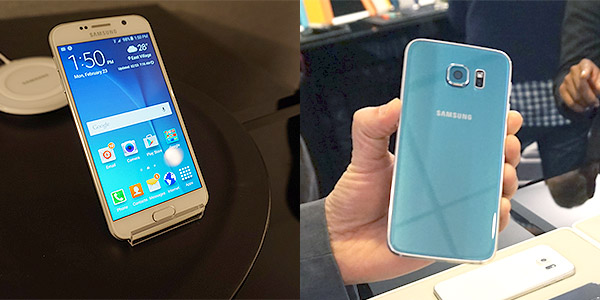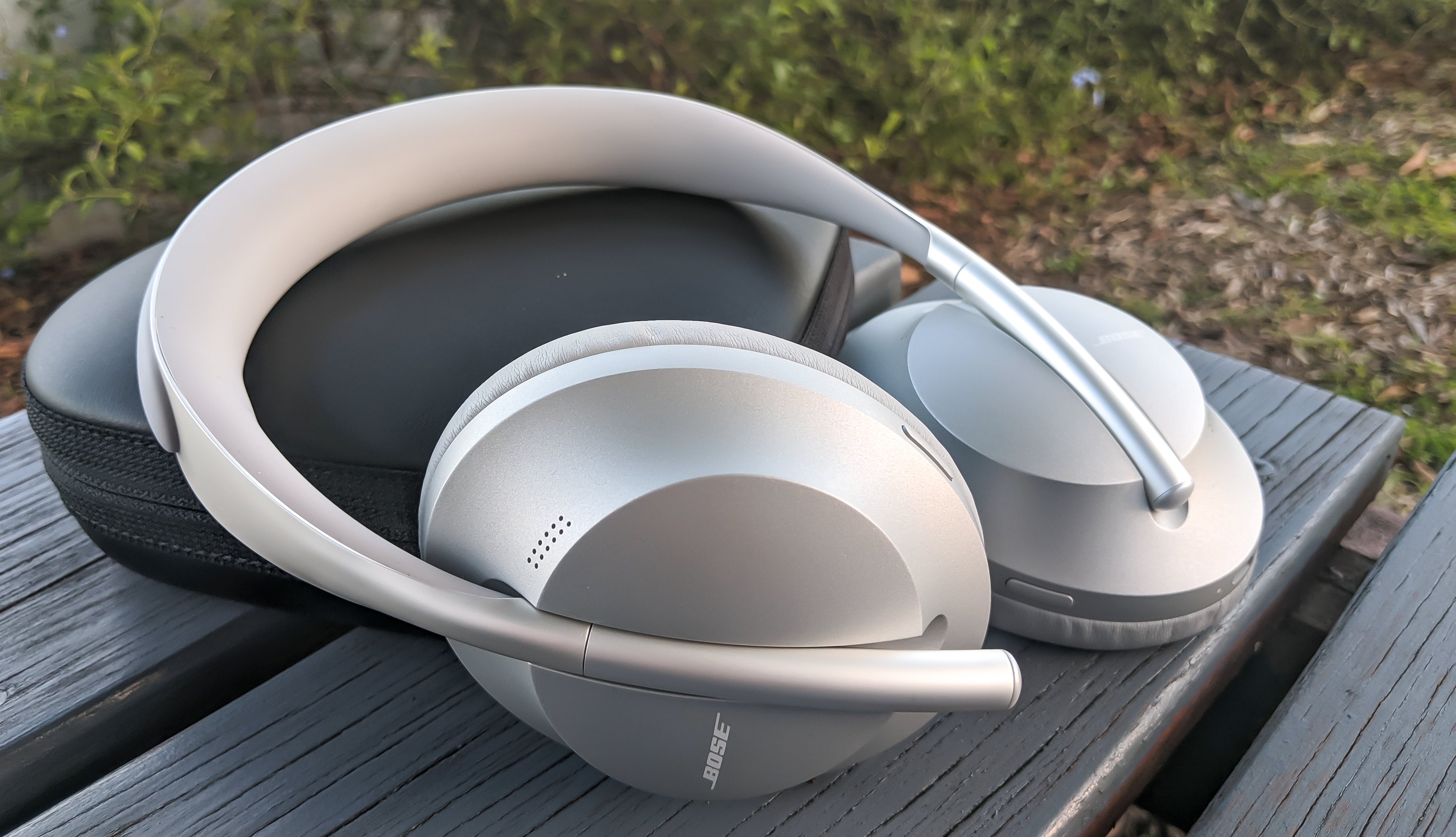Samsung Seals Out Galaxy S6 Users to Satisfy Critics
Samsung's Galaxy S6 may have a sexy design, but the the non-removable battery and lack of expandable storage are major turn-offs.

"Sticks and stones may break my phones, but words can never harm them," the (modernized) bromide goes. Unfortunately, in designing its new Galaxy S6 phone, Samsung let its critics' words influence its product decisions in ways that harm the user experience. The new phone and its curved sibling, the Galaxy S6 Edge, both look nice. But in order to achieve the unibody design journalists asked for, the company did away with its removable batteries, upgradable storage and water resistance.
Up until now, Samsung's flagship phones have been made of plastic — a design that has made it easy for the company to build in removable back panels and give users access to the battery bay and a microSD card slot. Astute consumers can buy replacement back panels with different designs or enhanced functionalities, such as wireless charging (which the new model has built-in). They can even get larger batteries with back panels that jut out to make room for them.
MORE: Galaxy S6 and S6 Edge Hands-on - Pros and Cons
The new Galaxy S6, like the iPhone and HTC One lines, uses a unibody design with a sealed back. Its front and back surfaces feature an attractive layer of opaque Gorilla Glass in such colors as black, white and topaz, while a real metal band rings the sides. Perhaps it would have been possible to include a removable back without compromising the design or adding cost — we don't know for certain — but it seems unlikely. Another disadvantage of the new Galaxy S6 design is that it isn't water-resistant like the Galaxy S5, which can survive for up to 30 minutes in up to a meter of water.
Why Samsung Caved
Let's go back in time a year, to the launch of the Galaxy S5, which looked fantastic with its textured, colorful back panel. For many of my colleagues in the press, that wasn't good enough. Samuel Gibbs of The Guardian wrote of last year's model that "Samsung has steadfastly stuck to its guns with the Galaxy S5, keeping the plastic construction and body … As a consequence, the Galaxy S5 looks cheap compared with some of its metal- and glass-clad competitors."
Zach Epstein of BGR wrote last April that Samsung is not good at design. "While competitors like Apple, HTC and others opt for premium materials on their flagship phones (which still cost the same amount to end users as Samsung's phones), Samsung uses plastics that feel flimsy and toy-like," he wrote.
Back then, Samsung was more than willing to stand behind its design decisions. Product Designer Dong Hun Kim told Engadget that "with plastic, the texture is warmer. We believe users will find [the device] both warmer and friendlier. This material was also the best at visually expressing volume, better at symbolizing our design concepts."
The Korean company was also proud of its removable-battery ability as recently as this past fall, when it ran a commercial showing frustrated smartphone users at the airport, desperately clustering around power outlets as they waited to take off. "Don't be a wall hugger," it advised while showing a Samsung Galaxy S5 owner swap out his battery.
However, when I asked Samsung reps about the loss of the removable battery, they immediately pointed to the Galaxy S6's rapid-charge feature, which promises to give you 50 percent capacity in 30 minutes. No matter how you slice it, that's still half an hour tethered to an outlet, provided that you even have access to one and time to sit on the airport floor.
The Importance of Removable Batteries
Though many people will never change their phone batteries, it's very important to have that ability. As batteries get older, they lose their ability to hold a charge, so the all-day endurance you enjoyed on day one could easily shrink to three quarters of a day a year later. Today's sealed-in batteries are meant to last for hundreds of cycles, but if they start to fade, you'll probably need a new phone.

As consumers move away from the two-year upgrade cycle and hold on to their devices longer, a fresh battery could mean the difference between replacing your phone after 20 months or 3 years.
Of course, dramatically increasing your phone's battery life is a lot better than just maintaining it. A number of third-party companies make inexpensive replacement batteries for Samsung phones that are double or even triple the capacity.
Last year's Galaxy S5 and its 2,800-mAh battery lasted a solid 9 hours and 42 minutes on our battery test, which involves continuous Web surfing over 4G. However, you can purchase a 5,600-mAh unit that promises double the endurance — long enough to last through two days of normal use, or one of heavy-use between charges — for just $30.
MORE: Best Smartphones
You can also get a pair of spare third-party batteries to keep in your pocket for around $25. I can't live without the 6,400-mAh extended battery on my Galaxy Note 3.
Storage Is Key
The Galaxy S6 comes standard with 32GB of internal storage, which is a welcome improvement from the 16GB that came with the base model Galaxy S5. However, by doing away with the microSD card slot, Samsung severely limits users' ability to store media files such as photos, videos and songs on their phones.
After you subtract several gigabytes for the operating system and preloaded apps, you'll only have so much space left for the programs you want to install and the files you need to take with you. A high-end game like N.O.V.A. 3 can easily eat up 1GB, while a 2-hour HD movie will clock in closer to 2GB. A 64GB microSD card costs less than $30.
Samsung's decision to dump microSD is especially puzzling when you consider the possibility that it could have simply moved the slot onto one of the phone's sides. HTC has a sealed back on its One M8 but still has a port for a microSD slot on its side.
Waterproof for Everyone?
Waterproof phones were once the exclusive domain of rugged phones, but in 2014, both Samsung and Sony brought this capability to their mainstream, flagship devices. Most users don't expect to go swimming with their smartphones, but they still benefit a great deal from the added protection.
You can check email on the Galaxy S5 in the rain without worrying about breaking it. You can spill your drink on it, without fear of damage. You can even drop it in the toilet, but not if it's a Galaxy S6.
The Start of a Pattern or Just a Blip?
In the early days of Android, most phones had replaceable batteries. However, as most manufacturers raced to make their devices thinner and more fashion-forward, Samsung became one of the last to use removable backs. The Galaxy S6's sealed chassis is particularly troubling because it could become the new standard for future Samsung phones, effectively bringing an end to battery freedom.
However, if the Korean electronics giant is known for anything, it's for offering a wide variety of choices. Consumers can still buy the Galaxy Note 4, which has a removable back, and we can hope that the next Galaxy Note phone will continue that tradition. Maybe the company will reverse course with the Galaxy S7, if that's what the critics dictate.
Follow Avram Piltch @Geekinchief and on Google+. Follow us @TomsGuide, on Facebook and on Google+.
Sign up to get the BEST of Tom's Guide direct to your inbox.
Get instant access to breaking news, the hottest reviews, great deals and helpful tips.
-
giovanni86 Well i like the feeling of my samsung phone. Though i used to own a S2 i upgraded to a Note 4. I think i've dropped my phone already over 100 times and not because i want to. All thats protecting it is a rubber cover. Not a single damage to it, maybe a few chip marks but its still going strong. Try to say that about any phone that isn't made of plastic. One drop and its you're last drop of that phone. Samsung mind as well be the new copy cat in town.. Hopefully there poor taste in the S6 design doesn't follow into the next note. And honestly battery life and the Micro SD is one of the key reasons i always buy Samsung. I currently have a 128GB Micro SD in my Note 4 and believe me i doubt i will ever look at any phone ever again.Reply -
none12345 Wow.....are they stupid.Reply
If i wanted an iphone i would go buy an iphone. They threw away 3 big features.... -
Tanner Fredrickson RIP Samsung. Now they just have the slowest android Touchwiz UI, and the highest cost, without any of the advantages that made them appealing in the first place. For that cost someone could get an iPhone or the functionally far superior Moto X, and now it looks like Samsung has deliberately removed their former advantages to compete in the "classy" market, which is gonna' fail because that niche has already been beaten into the ground.Reply
I'm really glad I still have a 2nd gen Moto G. It may not be "premium", but it's an unlocked, water resistant phone with an SD slot, and stock Android L, for less than $200. Which currently makes it a lot more desirable to me than anything Samsung or Apple are offering in their premium "form over function" slap fight. -
HideOut I own all samsung products for mobile. But i purchased them instead of HTC because I could add a micro card. Congrats samsung. YOu just lost a huge portion of your customer base. All th at we have left now is LG. moronsReply -
SmartGirlBuyer > As a consequence, the Galaxy S5 looks cheap compared with some of itsReply
> metal- and glass-clad competitors.
Why?
Because *YOU* say "metal looks expensive" and "plastic looks cheap" and "glass
looks expensive"???
I say it's just the opposite. And since I'm the buyer... I matter.
Needless to say... I will *NEVER* buy an S6 and all of its newly removed features. -
Husk I can't believe they went with no slot and no removable battery. They must be trying to make it look like an iPhone. If I wanted an iPhone I would get one. I was hoping that this S6 would be a phone I wanted. No removable battery is a total deal breaker for me. I wonder how many loyal Samsung owners will go elsewhere now.Reply -
soldier44 And because of doing away with those 2 things they will loose a lot of sales to people.Reply -
Renegademstr Hmmm yeah, I was holding out for an S6, but the decision to remove SD card storage and battery just blew it, very upsetting Samsung, looks like HTC again for me.Reply -
amk-aka-Phantom Well done, Samsung. Now watch your profits fall and cry. No one outside of Apple userbase cares about design more than about these two features that made your phones stand out. All your $ are now belong to HTC.Reply
